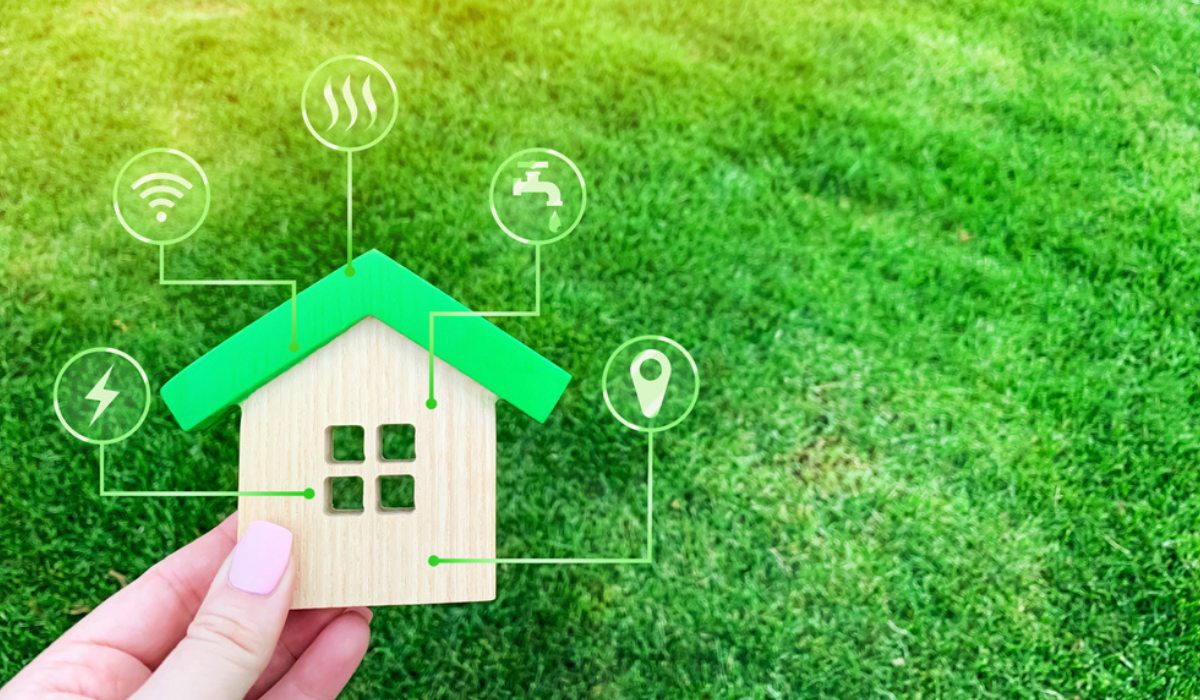Sustainable home design integrates eco-friendly practices to reduce environmental impact. It enhances energy efficiency, resource conservation, and indoor air quality.
Sustainable home design focuses on creating spaces that are both environmentally responsible and resource-efficient. This approach considers the entire building lifecycle, from design and construction to operation and maintenance. Key elements include energy-efficient appliances, renewable energy sources, and sustainable building materials.
Water conservation techniques like rainwater harvesting and low-flow fixtures are also crucial. Incorporating natural lighting and ventilation reduces the need for artificial heating and cooling. By choosing sustainable home design, homeowners can significantly reduce their carbon footprint and create healthier living environments. Embracing these practices not only benefits the planet but also leads to long-term cost savings.
Introduction To Sustainable Home Design
Sustainable home design focuses on reducing the environmental impact. It uses resources more efficiently. Homes are built to last longer. Energy and water use are minimized. This type of design helps the planet.
Why It Matters
Our planet needs protection. Sustainable homes reduce waste and pollution. They save money on energy bills. They create a healthier living environment. Future generations benefit from these efforts. This is why it matters so much.
Key Principles
Use natural and recycled materials. Install energy-efficient appliances. Utilize solar power. Design for natural light and ventilation. Harvest rainwater for garden use. Insulate walls and roofs properly. Reduce water waste with low-flow fixtures. Every step counts.
Energy-efficient Solutions
Enhance your home with energy-efficient solutions for a sustainable design. Embrace eco-friendly practices to reduce your carbon footprint and save on energy bills.
Solar Panels
Solar panels help save energy. They capture sunlight and turn it into electricity. This can lower your electric bills. Solar panels also reduce your carbon footprint. They are a great choice for eco-friendly homes. Installing solar panels can add value to your home.
Energy-saving Appliances
Energy-saving appliances use less power. They can help reduce your energy bills. Look for appliances with the Energy Star label. These appliances are more efficient. They are better for the environment. Using energy-saving appliances can also extend their life. This means fewer replacements and less waste.
Water Conservation Techniques
Low-flow fixtures help save water. These fixtures reduce water flow. Less water is used during showers and hand washing. They are easy to install. Low-flow fixtures can also save money on water bills. This is a simple way to help the environment.
Rainwater harvesting collects rainwater. The water is stored in tanks. This water can be used for gardens and toilets. It reduces the need for tap water. Harvesting rainwater helps conserve water. It is a great way to use natural resources.
Eco-friendly Building Materials
Using recycled materials helps reduce waste. Old wood can be reused for floors. Recycled glass can make beautiful countertops. Metal scraps can be turned into new fixtures. These choices save resources.
Natural insulation options include wool and cotton. Wool keeps your home warm. Cotton is soft and safe. Both materials are renewable. They break down safely in the environment. Choosing these helps protect nature.
Indoor Air Quality
Non-toxic paints are safe for indoor air. They reduce harmful VOCs (volatile organic compounds). Kids and pets stay healthier with these paints. These paints also protect the environment. Choose brands labeled as low-VOC or zero-VOC. It’s easy to find these paints in stores. Many colors are available for your home design.
Plants clean the air inside your home. They remove toxins and produce oxygen. Spider plants and snake plants are great choices. Peace lilies and ferns also help. These plants are easy to care for. Place them in rooms with good light. Water them regularly. Your indoor air quality will improve with these plants.
Sustainable Landscaping
Native plants are vital for a sustainable garden. They need less water and care. Local wildlife depends on them. These plants adapt well to the local climate. They resist pests and diseases naturally. Your garden will thrive with native plants.
Xeriscaping saves water and reduces yard work. This method uses drought-tolerant plants. It also includes efficient irrigation systems. Mulch helps keep moisture in the soil. Choose gravel or stones for paths. This helps reduce soil erosion.
Waste Reduction Strategies
Composting reduces waste at home. It turns food scraps into rich soil. This helps gardens grow. Composting bins are easy to use. They can be kept in the backyard. Use compost for plants and flowers. This reduces the need for chemical fertilizers. Save money and help the environment by composting.
Set up recycling bins in your home. Sort paper, glass, and plastic. This keeps trash out of landfills. Check local recycling rules. Some items need special handling. Teach kids to recycle too. Recycling saves natural resources. It also reduces pollution.

Credit: medium.com
Smart Home Technology
Automated systems make homes more efficient. They control lights, heating, and cooling. These systems reduce energy waste. Devices can be controlled from a smartphone. This makes life easier and saves energy. Smart thermostats adjust to your schedule. They learn when you are home or away. This helps in saving energy and money.
Energy monitoring helps track energy use. It identifies which devices use the most energy. This helps in making better choices. Smart meters show real-time energy usage. They help in understanding your home’s energy consumption. This data helps in reducing energy bills. Using energy-efficient appliances also makes a big difference. These appliances use less power and save money.
Case Studies
One home used solar panels to save energy. Another project installed a rainwater collection system. This saved water for gardens and toilets. A third home used recycled materials for construction. These materials included old wood and metal. Each project showed that eco-friendly practices can be easy and effective.
Homes with solar panels saw lower electricity bills. Rainwater systems helped in drought areas. Using recycled materials reduced waste. Each project taught that planning is key. Start small and grow your efforts. Eco-friendly designs are both cost-effective and beneficial for the planet.

Credit: www.advancedhouseplans.com
Future Trends In Sustainable Home Design
Homes now use bamboo instead of wood. Bamboo grows fast and is strong. Recycled steel is also popular. It saves resources and is very sturdy. Cork is another great material. It is soft and comes from tree bark.
Hempcrete is also being used. It is made from hemp and lime. Hempcrete is light and strong. Reclaimed wood is very trendy. It comes from old buildings and looks great.
Solar panels are becoming more common. They use the sun to make electricity. Smart thermostats can save energy. They learn your habits and adjust the temperature. Greywater systems reuse water from sinks and showers. This helps save water.
Energy-efficient windows keep homes warm in winter and cool in summer. LED lighting uses less energy and lasts longer. Green roofs have plants on top. They keep homes cool and help the environment.

Credit: www.kaikodesign.com.au
Frequently Asked Questions
What Is Sustainable Home Design?
Sustainable home design focuses on using eco-friendly materials and energy-efficient systems. It aims to reduce environmental impact. This includes renewable energy sources, water conservation, and sustainable building materials.
How Can I Incorporate Eco-friendly Practices?
Incorporate eco-friendly practices by using recycled materials, installing solar panels, and choosing energy-efficient appliances. Optimize natural lighting and ventilation to reduce energy consumption.
Why Is Sustainable Home Design Important?
Sustainable home design reduces carbon footprint and conserves natural resources. It also lowers energy bills and creates a healthier living environment. It’s essential for a sustainable future.
What Materials Are Considered Eco-friendly?
Eco-friendly materials include bamboo, reclaimed wood, recycled metal, and low-VOC paints. These materials are sustainable and reduce environmental impact. They are also durable and often cost-effective.
Conclusion
Designing a sustainable home benefits both the environment and your well-being. Eco-friendly practices reduce energy costs. They also create healthier living spaces. Start small by choosing green materials and energy-efficient appliances. Every step towards sustainability makes a difference. Embrace eco-friendly home design for a brighter future.



GIPHY App Key not set. Please check settings